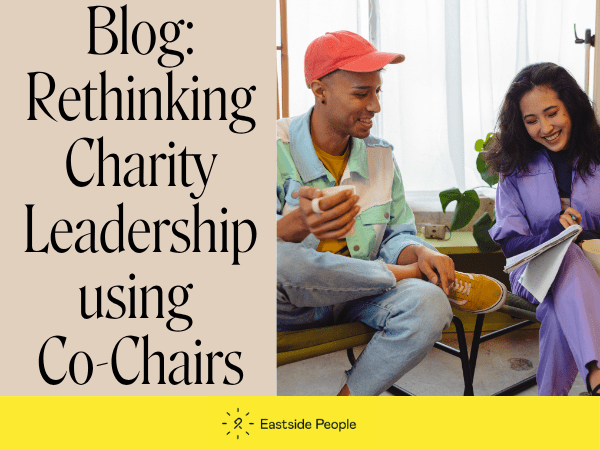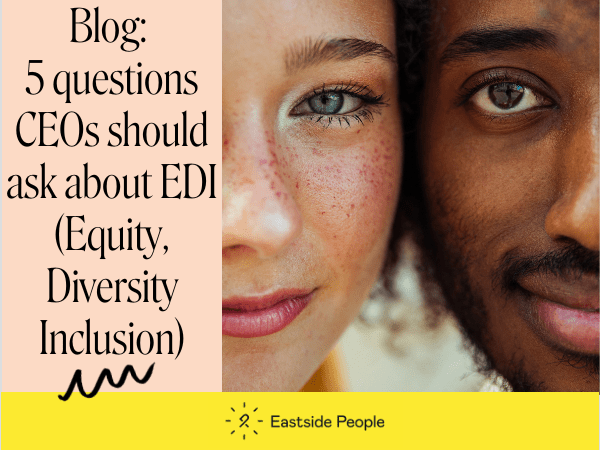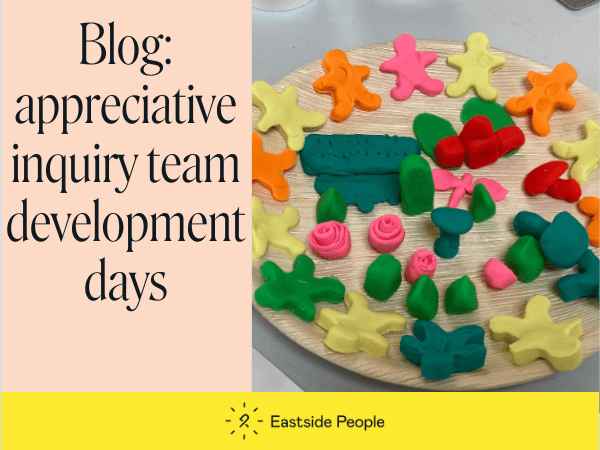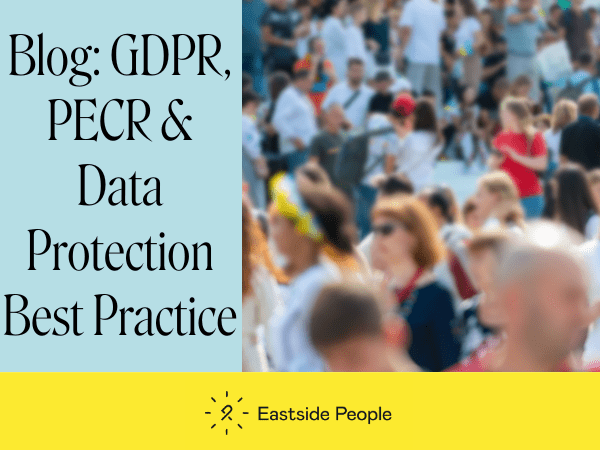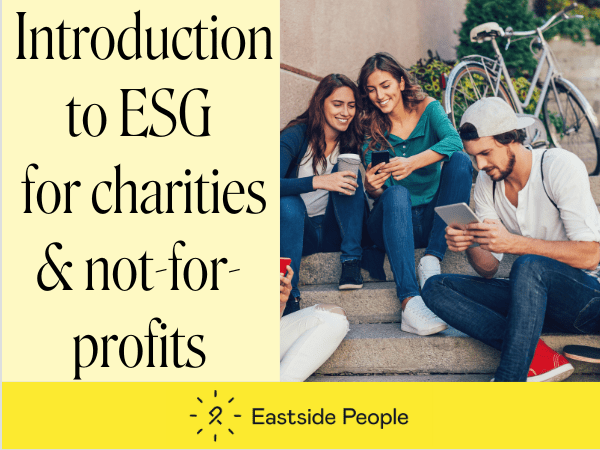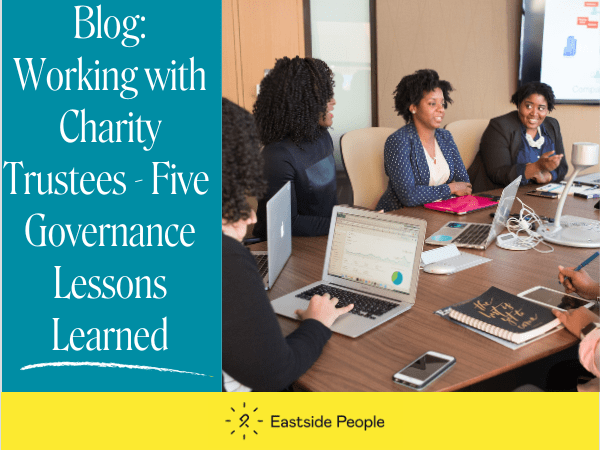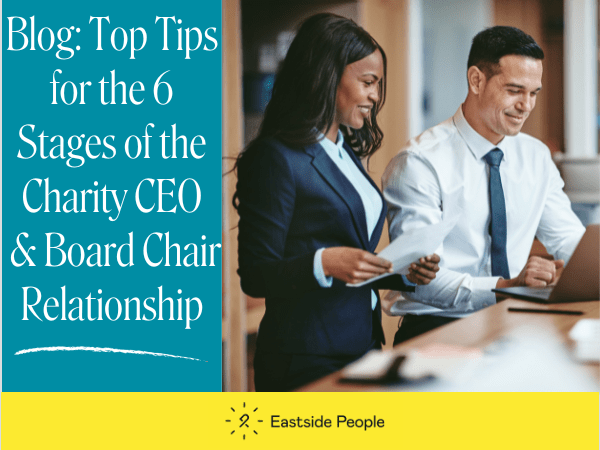How to build brilliant board behaviours
From decision-making to dynamics: This blog by Eastside People Communications Consultant Fiona McAuslan lists the top 8 traits and habits that make brilliant boards stand out.
1. Brilliant boards make time for trustees to get to know each other
Boards generally meet between 3-6 times a year for around 2 hours at a time. That adds up to less than 2 working days. Even adding in time spent in sub-committee meetings it still affords trustees relatively little time to work alongside one another. This matters. Several recent studies* link social workplaces to higher engagement, retention and productivity.
Away days and ice breakers are great, but sometimes relationship building can be as simple as inviting people to turn up half an hour before a meeting starts to have an informal mingle with each other.
2. Brilliant boards understand diversity is dynamic not static
Board diversity is often misunderstood. It’s not about filling a bingo card of protected characteristics or lived experiences. The real value lies in diversity of thought: bringing together individuals with different perspectives, insights, and ways of thinking.
A fully functioning board creates an environment where that diversity is welcomed, respected, and heard. If trustees, particularly those from demographics currently underrepresented on boards, don’t feel able to speak up then the board isn’t making the most of its members. Same goes if their contributions aren’t taken seriously, or they’re only invited to speak on matters relating to their lived experience.
A skilled chair will actively create space for every trustee to contribute, making sure no voices dominate, and no perspectives are overlooked. Which leads nicely to the next point …
3. Brilliant boards have strong chairs
Strong doesn’t mean dominant. It means strong on governance, strong on communication, strong on strategic direction and, most importantly, strong on empathy. Chairs who understand these essential components set the board up for success.
Good chairs ensure everyone gets heard – they’ll invite opinion from everyone, either during the board meeting or via a check in afterward. They’re able to keep a meeting on track and marshall diverse views, most importantly, a comfortable CEO is often a sign of a good chair – someone who can act as a sounding board and conduit of opinion between executive and board is key to productive relations.
4. They understand their charity’s mission
Sounds obvious right? Yet so often trustees aren’t clear about the charity’s mission, its key ambitions and challenges and what their role is in helping achieve this.
All trustees should be able to say why their charity does what it does and moreover describe its impact and ambitions. Not only is this essential for good governance – but it’s also useful to have up your sleeve when chatting to prospective stakeholders.
5. They Stick Their Noses In, But Keep Their Fingers Out
In other words, fully functioning boards understand the difference between strategy and operations. Their role is to set direction, not to meddle in the minutiae.
Brilliant boards put structures in place to support this distinction. A clear, well-communicated strategy, backed by easy-to-understand KPIs and benchmarks, helps trustees focus on where they can add the most value. It also gives them a framework for asking the right questions of the executive, without crossing the line into operational detail.
6. Brilliant boards actually make decisions
Decisions are tough sometimes: you want more information, you think you need more time, perhaps you hope a tricky situation ‘might sort itself out’.
Ultimately trustees are where the buck stops. Sometimes services need to be closed, sometimes charities need to merge, sometimes systems need to be streamlined. If key decisions need to be made, it’s on the board to make them, not kick them into the long grass of a future board meeting.
It’s destabilising for an organisation to live under a cloud of uncertainty, which is what can happen when decision making is lost in a dither.
7. They invite feedback
‘How did the meeting go?’ Good boards don’t leave that question unanswered; they build in feedback mechanisms to learn and improve.
Try introducing a 5-minute feedback session at the end of each board meeting or ask questions via a post-meeting anonymous survey. Ask every trustee to share one thing that went well and one Even Better If. You’ll be surprised how much insight this simple exercise can generate.
Whatever method you choose, regular check-ins between the chair and individual trustees are essential. They help ensure that feedback is acted on, not just gathered and forgotten.
8. Brilliant boards know there’s no such thing as brilliant
It’s all a work in progress, with adapting, audits, revisiting and revising strategies part of the process. But recognise that and you’ll take your board one step closer.
You’ll hear more light-bulb insights and strategies at The Festival of Trusteeship taking place during Trustees Week 3-7 November 2025.
Explore all the sessions here.
* References
- Workplace Friendships Linked to Higher Engagement, Retention, and Productivity, HR Review, 29 July 2025
- The Power of Socialisation, Compass Group UK & Ireland, July 2024.



